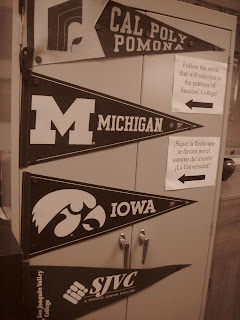What do you feel when you see graffiti tagging on your wall or on a school building? It looks bad, right? “Well, we have to start cleaning up the act of graffiti taggers,” stated Rolando Blanco, a 45-year-old man who lives in the worst area of Pomona, where all the tagging takes place. “It is our responsibility to start programs to help teenagers against tagging and against gangs,” he added. In our community, we now face graffiti (the territorial markings of gangs) and its deeper meaning, but now it is time to work toward the ending of graffiti.
Graffiti looks ugly on the surface, but it also has a deeper meaning which is even uglier. This deeper meaning is violence. Graffiti is the marking of gangs. When a gang wants to gain more territory they tag more ground, but when they go into another territory, the violence erupts. The gangs enter into actual war for the territory they want and heartless; they kill the innocent and their adversaries. Plus, now more and more gangs are expanding into newer territories, and our neighborhoods are not safe anymore.
As graffiti continues to expand, we now face it in our own community. In a news article from The Los Angeles Times, it states how a man, trying to stand up to a gang member, was shot for standing up for what he believed in. Two weeks after the incident, the same tagger was back and tagging more and more on the streets of Los Angeles. This also happens in the suburbs of Los Angeles, in our own community, Pomona. I went out to the community of Pomona to ask a few questions to the public about graffiti. A man named Edgar Bautista, 29-year-old man that works at Cardenas stated, “graffiti makes our community look bad and it starts violence among gangs.” This man described the ugly sight of graffiti, how it starts violence and shootings.
Gangs mark their territory with graffiti. The gangs are like dogs, they mark their territory wherever they want, and that causes many problems. Now, we need to work toward reclaiming what was ours, our streets, our parks, our community in general.
Graffiti looks horrible in our streets and in our community. It also has a deeper meaning on the inside, and that meaning could kill any innocent person. If a person stands up to a tagger or a gang member, they could get shot just like the man in the news article. This graffiti problem does not only occur in Los Angeles, now the suburbs of L.A. are suffering with the same problem. Let us start building programs to reunite our community and also to get rid of gangs and taggers.











